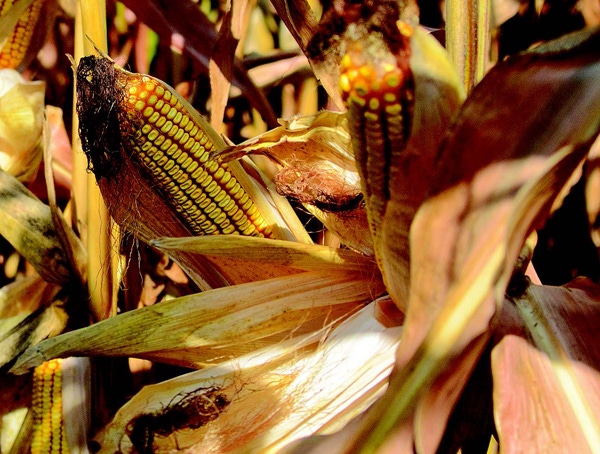
Think differentWith transgenic corn rootworm hybrids’ widespread adoption, it may be time to rethink high-yield corn fertility, says Fred Below, University of Illinois plant physiologist.Research conducted by Below and grad student Ross Bender shows that rootworm hybrids’ roots are active longer after flowering than conventional corn’s roots. This increases nutrient uptake, especially of nitrogen, phosphorus, potassium and zinc.“We would argue that soil-fertility recommendations might be out of date for the yield goals that are achievable with today’s hybrids,” Bender says.With the increased uptake, phosphorus is of special concern, given current fertility practices, says Below. Surveys show that on average, Illinois farmers apply just over 90 pounds per acre phosphorus in a corn and soybean rotation. Since corn and soybean harvest removes about 80% of phosphorus, Illinois soils are being depleted of phosphorus at the rate of 30 pounds of P2O5 per acre every two years, he e
March 21, 2014

When it comes to high-yield corn environments, nitrogen gets well earned respect as the most critical element in a fertility program. But three key nutrients’ under-recognized importance – sulfur, zinc and the long-recognized standby, phosphorus – could limit yields from an otherwise well-fertilized crop, says University of Illinois Plant Physiologist Fred Below.
“These are the missing links for high-yield corn,” says Below. “Many farmers don’t fertilize for sulfur and zinc. And many people don’t realize the season-long importance of phosphorus.”
In research conducted by Below and graduate student Ross Bender, extra phosphorus, sulfur and zinc increased corn yields 8-10 bushels per acre in fields already supplied with a balanced high-yield fertility program. “We have seen yield increases greater than would be expected based on the phosphorus soil test,” says Below. “Phosphorus’ uptake rate is greater than what many soils can supply based on the soil test.
“I’m also convinced that at yields above 200 bushels per acre, there are many cases where yields are being limited by sulfur and zinc,” adds Below. “I don’t think that soil fertility has kept up with today’s hybrids’ yield potential.”
His research tracked six hybrids for site-years at Urbana, Ill. (2010) and DeKalb, ll. (2010). The recommendations for phosphorus, sulfur, and zinc apply to both transgenic insect protected corn rootworm hybrids and non-protected hybrids. Research also suggests that the insect-protected hybrids may have additional nutrient accumulation later in the season (because of healthier, more active roots), especially when there is a yield increase as a result of the insect protection. “With the quantity of hybrids and locations tested, we’d feel this is generally representative of most modern corn hybrids currently used,” University of Illinois Crop Physiology Graduate Student Ross Bender says. “We evaluated five hybrids at DeKalb and six hybrids at Champaign during 2010 (one trial at each location). The five hybrids grown in DeKalb were also grown in Champaign plus one additional hybrid.”
Nutrient uptake timing is key
Phosphorus, sulfur and zinc nutrient-uptake patterns hint at why extra fertility may pay off, says Bender, whose graduate work has focused on corn nutrient uptake. Unlike most other nutrients, phosphorus, sulfur and zinc accumulation is greater during grain-fill than during vegetative growth stages. This suggests that an assured season-long supply is critical for balanced crop nutrition and optimum grain fill, he says. In corn, half of total uptake of the three nutrients occurs after flowering. That contrasts with nitrogen, two-thirds of which is absorbed at silking.
The late-season demand for key nutrients suggests that grain yield could be lost if they are in short supply. The percentage of phosphorus, sulfur and zinc, as well as nitrogen, contained in the grain, highlights its critical nature. In the neighborhood of 60% of total nitrogen, sulfur and zinc taken up during the growing season is contained in the grain. Phosphorus tops out at 79%. In comparison, the percentage of potassium and boron in the grain is at 33% and 23%, respectively.
Among major and macronutrients, sulfur may present a special challenge. While a large percentage of most nutrients taken up by grain is mobilized from plant tissues, most sulfur in grain is taken up from the soil.
Subsurface banded below row
The phosphorus, sulfur and zinc boost in the University of Illinois research was supplied by 250 pounds/acre of a 12-40-0-10S-1zinc fertilizer. The fertilizer used in the test, MicroEssentials SZ, from Mosaic, was banded 4-6 inches below the row at planting.
Subsurface banding may help improve nutrient uptake, says Below. The fertilizer formulation, which fuses a blend of nutrients in each granule, may also contribute to improved uptake and season-long sulfur availability, according to the manufacturer.
“Our approach is to feed the plant, not the soil,” says Below. “Feeding the soil is probably not going to get you to 300-bushel corn. Fertilizer sources that supply nutrients at the rate and time that match corn nutritional needs are critical for optimizing nutrient use and yield.”
Below says the “booster” fertilizer application rate used in the research trials, which supplies 100 pounds/acre of P2O5, 25 pounds/acre of sulfur and 2.5 pounds per acre of zinc, would be sufficient for corn with a yield goal of 230 bushels per acre. For a 300 bushels per acre yield, he recommends bumping rates 25% to 30%.
About the Author(s)
You May Also Like





